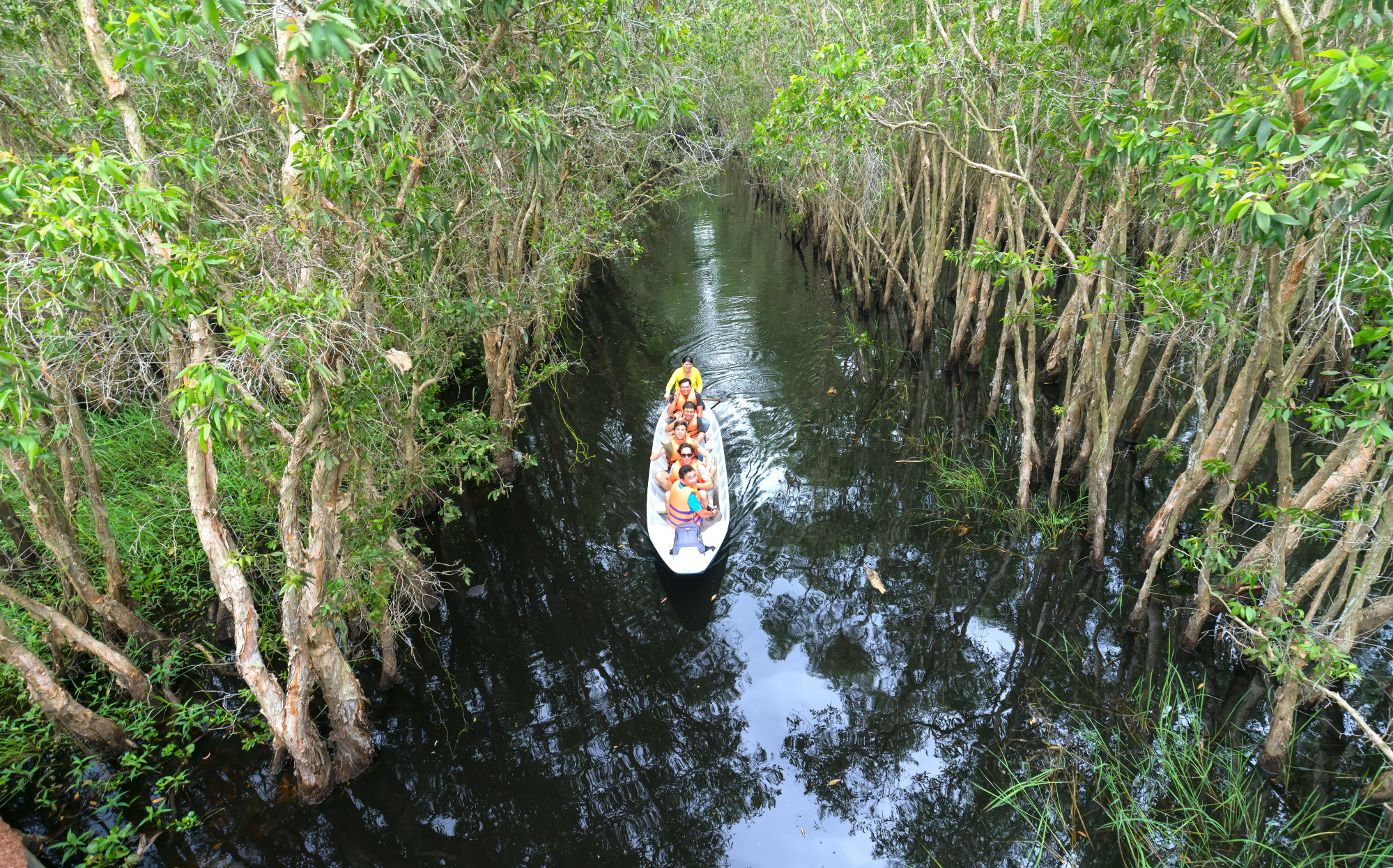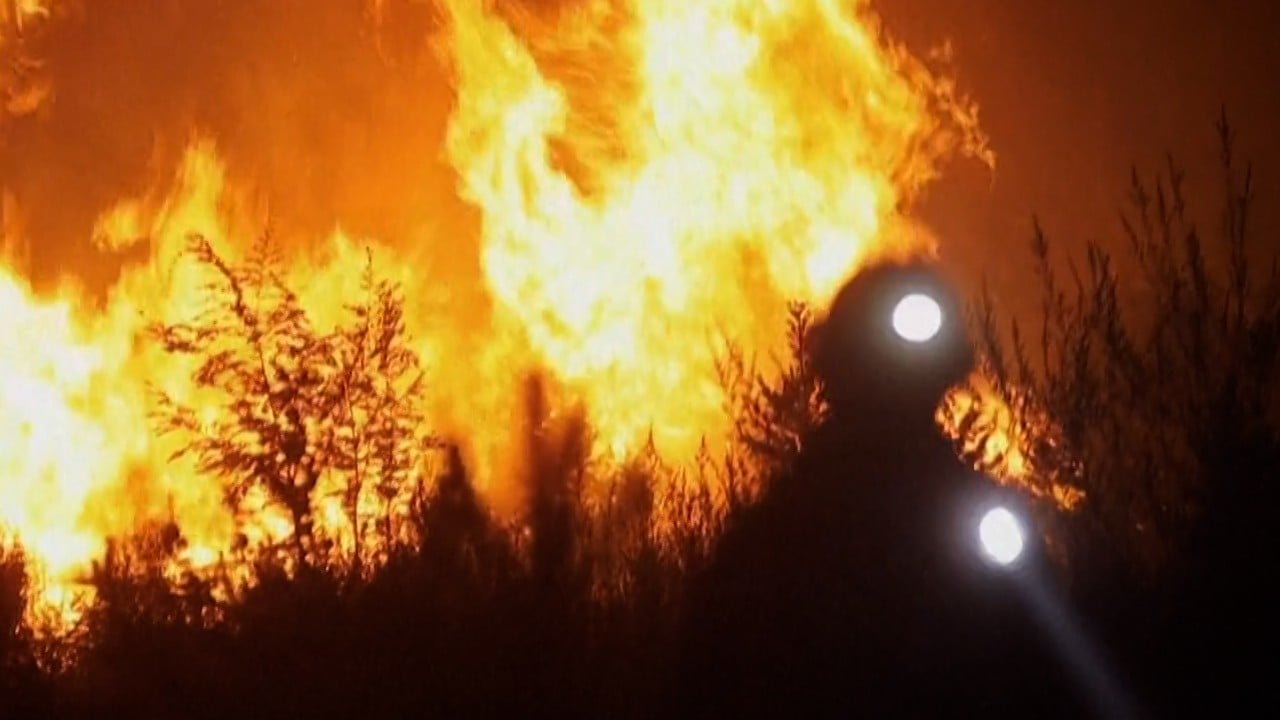The ocean system comprising tiny phytoplanktons to mangrove belts and sea grasses can store up to five times more carbon than tropical forests, but its vast natural potential is being rapidly depleted, according to Siti Maryam Yaakub, senior director at Singapore-based International Blue Carbon Institute.
So-called blue carbon is known by scientists as carbon stored in ocean systems, and Southeast Asia has one of the largest such sources, but the region is also experiencing massive losses of this potential due to human activity such as aquaculture.
Can Red Sea attacks speed up Southeast Asia’s clean energy transition?
Can Red Sea attacks speed up Southeast Asia’s clean energy transition?
Within Southeast Asia, the two dominant blue carbon ecosystems are mangroves and seagrass habitats. Mangroves are essentially forests that grow in the interface between the land and the sea, while seagrass are underwater plants that thrive in brackish and shallow water.
The region had been lax in preserving its blue carbon potential, Siti said.
“For example, a lot of the mangroves in Sumatra and Java [in Indonesia] are quickly being converted into shrimp farming, and there’s also conversion into palm oil [cultivation],” she said.

Many poverty-stricken areas also cut down mangroves to use them as firewood for cooking, while a steady erosion is also happening due to the impact of climate change, Siti said.
“With sea levels rising, you will get more of these mangroves being inundated more frequently. And you will have changes in hydrodynamics, which drives erosion and mangroves,” she said.
The marine systems need to be protected and nurtured for their potential because they cannot only absorb carbon within the plant biomass but also in the soil sediments, Siti said.
Can Southeast Asia put climate over politics to bridge the financing gap?
Can Southeast Asia put climate over politics to bridge the financing gap?
Around 71 countries have three of the richest blue carbon sources – mangroves, seagrass and salt marshes – but only half of these nations have included coastal and marine nature based solutions in their initial nationally determined contributions, she said.
The Paris Agreement aims to strengthen global response to the threat of climate change by keeping global temperature rise this century well below two degrees. A UN report late last year said the world is not on track to meet the goal.
Most Southeast Asian nations also aim to achieve net zero emissions by 2050 or 2060.
Gradual recognition
“Blue carbon is a relatively new kid on the block,” Siti said. “Whenever we hear about nature-based climate mitigation, everyone thinks of forests.
“There’s still a lot of awareness that needs to be built around what are the kinds of policies that will encourage more of this more protection and restoration actions around blue carbon ecosystems,” she said.
Why Japan’s seaweed might be the new supercrop to cut carbon emissions
Why Japan’s seaweed might be the new supercrop to cut carbon emissions
Siti said the International Blue Carbon Institute is encouraging countries to include blue carbon ecosystems in their NDC.
The institute in October organised workshops around policy and financing solutions for blue carbon with the support of the UK government and the Singapore national climate change secretariat.
While some headway has been made, there is a lot of work ahead because the true extent and condition of resources like seagrass meadows in parts of the region have yet to be validated, Siti said.
Policymakers are sometimes unsure of how these resources can be included in their climate policy goals, she said.
“So some countries are quite advanced in that sense. And other countries are still learning about their own blue carbon resources and how they can actually include it in the nationally determined contributions,” Siti added.

Another climate scientist said developing blue carbon should be a priority for national governments, but it should go hand-in-hand with efforts to reduce carbon emissions from industries and other sources simultaneously.
Souparna Lahiri, senior climate and biodiversity policy adviser at the Global Forest Coalition, cautioned that benefits derived from developing such ecosystems should not be used for trading in carbon credits in world markets because it would hurt climate objectives.
“Marine ecosystems are very good carbon sequesters, and they should have traditionally been protected. But you should not seek to develop them in order to trade carbon credits that would enable industries to compensate for their emissions,” he said.
“If I emit carbon now, then it stays in earth’s atmosphere for at least 100 years. By developing blue carbon sources, it will reduce carbon 40 to 50 years later,” Lahiri said, adding that any effort to develop marine ecosystems for their environmental impact should be a standalone activity.


